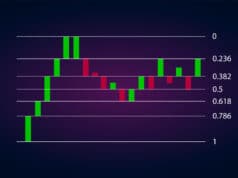The forex industry has evolved from the days where only the elite who worked for banks and were financial market aficionados traded. Aside from the several self-trading solutions available, another viable option is managed accounts, specifically targeted at investors with no interest in actively trading but would like to earn passive income nonetheless.
Through piggybacking off skilled and experienced traders, managed account solutions aim to achieve this objective. So, what exactly are managed accounts in forex, and are they of any use? This article will cover how they work, the distinct types that exist, and lastly, the pros and cons.
Managed accounts in forex
Any managed account involves a fund or money manager and the monetary contributions of an individual or group of investors. A broker should act as the intermediary between the two in providing the trading platform and software for the managed accounts.
The goal is for the clients to replicate the performance of the more experienced money manager, who will typically charge a commission for any profits. Clients have the opportunity to profit from the forex markets without actively trading, while the experienced trader can earn additional income from their performance.
The different types of managed accounts
The three most common managed accounts in forex are:
- PAMM (Percentage Allocation Management Module)
- MAM (Multi-Account Manager)
- LAMM (Lot Allocation Management Module)
PAMM
A prevalent managed account option in forex is the PAMM. Its purpose is for investors to open a trading account through a broker and attach it to a selected and experienced trader, whose positions will be distributed proportionally in a risk-adjusted system.
For example, if the fund manager opens a trade worth $50 (let’s say this is 2% of their account), the technology will adjust the lot size to ensure the investor’s trade is worth 2% of their balance.
Any profits or losses occurring on the ‘master’ account will be allocated proportionally with the allocation percentage. Let us illustrate an example to understand the allocation principle better.
Firstly, the share of profits will always equal 100% regardless of the number of clients. Let’s say an investor (investor A) decides to invest $1,000 after seeing impressive results from a fund manager and also learns they will charge 10% as commission for any profits.
After a month, the fund manager generates a profit of $500:
- Investor A’s equity: $1,500
- Performance fee to the fund manager: $50 (500 X 10%)
At this point, 100% of the profits (excluding the commissions) go to investor A. In the end, they would have made $450.
After this month, another investor (investor B) is also interested in joining the pool with $2,000. Let us assume investor A decides not to withdraw the profits from their account. Together with investor B’s investment, the total equity is $3,450.
Each investor’s total share in the profits is now 50%. Let’s say after a month, the fund manager manages a 20% growth, taking the pool balance to $4,140 ($3,450 X 20%). The total profit is $690.
After their 10% commission, the remaining amount is $621, half of which goes to each investor according to the 50% allocation. As the pool increases, the percentage will reduce accordingly, where everyone gets an equal share.
The fund manager needs a profitable and risk-centric track record, the length and parameters of which depends on the broker. Fund managers are merely independent contractors rather than employees.
Investors will access detailed performance statistics about various fund managers in a leaderboard to decide which to invest based on their personal risk appetite and goals.
After that, there should be a signed agreement, usually in the form of an LPOA (limited power of attorney), where investors accept full risk responsibility of the PAMM, the manager’s performance fee, minimum investment amount, and any other important Ts & Cs.
The performance fees, as stated in the agreement, would be automatically withdrawable to the manager. Some PAMM accounts have strict investment periods where investors are not permitted to withdraw. Failing to do so usually results in a penalty incurred by the client.
While the ‘master’ PAMM account is the total sum of all clients’ deposits, their actual individual funds remain in their capacity and aren’t accessible to the money manager.
LAMM
LAMM accounts are less renowned, although they function like PAMM, except the system uses lot allocation. Such accounts are reserved for investors with quite a large trading balance. Liquidity tends to concern those with equity above five figures as the filling of orders can be trickier than usual.
MAM
The designated fund managers merely use the MAM account to control multiple PAMM accounts from one source. Each PAMM effectively connects to the MAM account.
Pros and cons of managed accounts
For starters, PAMM accounts are a passive way of investing in forex. For inexperienced investors who prefer not to spend considerable time learning about the markets, the PAMM solution is logical.
They can effectively earn without doing much other than making a deposit and occasional reviewing. However, this point doesn’t completely remove the risk anyone can experience trading their own funds, which is the biggest drawback.
Although investors can see comprehensive performance statistics of every fund manager they may potentially subscribe to, there is no guarantee an account cannot experience a sustained drawdown due to human error. Essentially, they have no control over the taken positions.
Thus, investors need faith in the fund manager they are investing in, especially if they have very little insight into their strategy. As the adage goes, ‘Past performance does not guarantee future results.’ Some investors may find the performance fees as another disadvantage as well.
Conclusion
While we’ve outlined different money management systems above, the PAMM forms the basis of them all and is, therefore, the most popular.
Managed accounts are a win-win for all parties involved for several reasons:
- Experienced traders can leverage their profiting skills in exchange for performance fees.
- Investors can earn off these skills with very little active involvement.
- Brokers continually earn spreads and commissions.
However, the risk factor lies mostly towards the investors, which may be unusual if they have little forex experience or knowledge. Therefore, anyone considering PAMM should at least understand broadly how the markets work and ensure they use the capital they can afford to lose.




